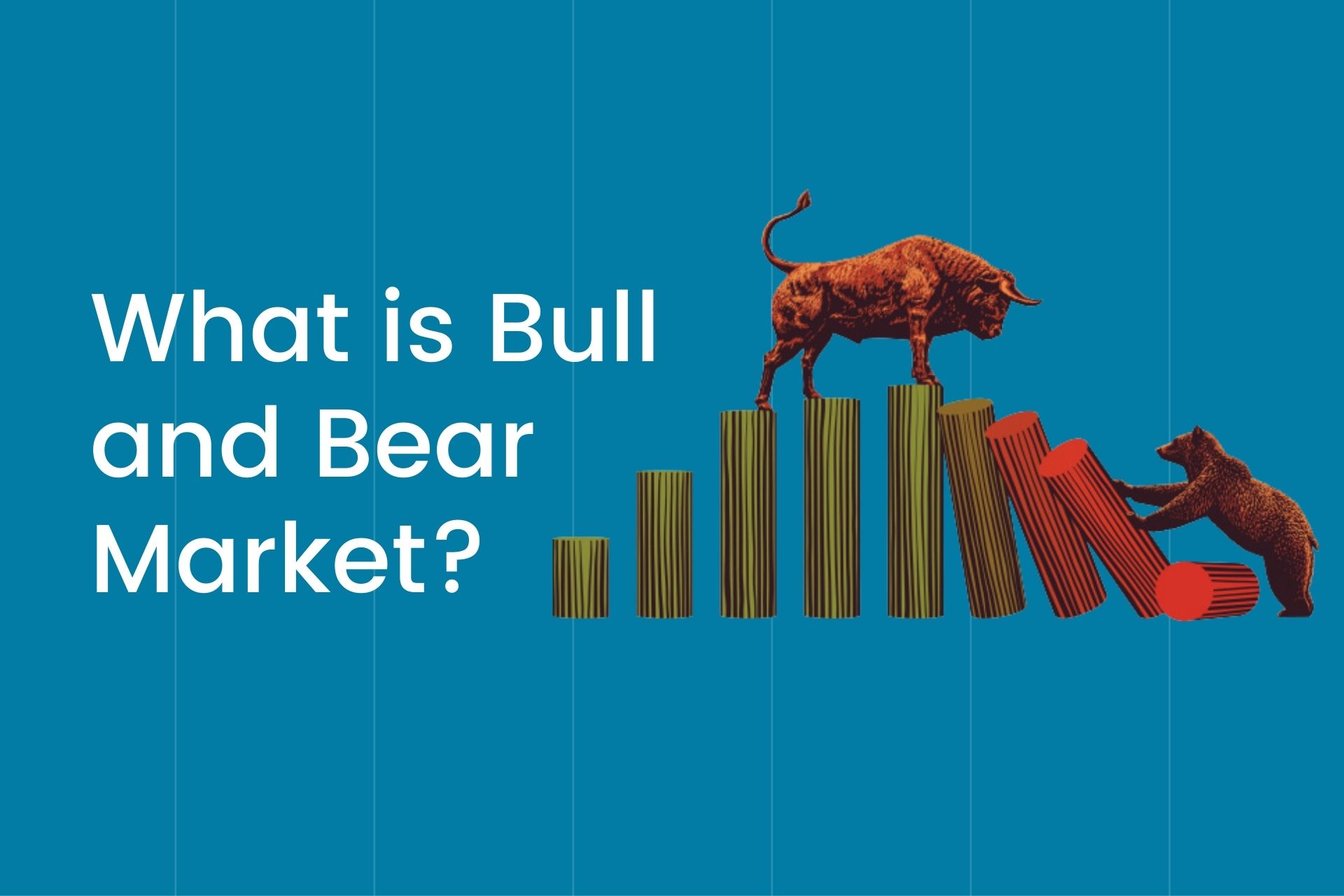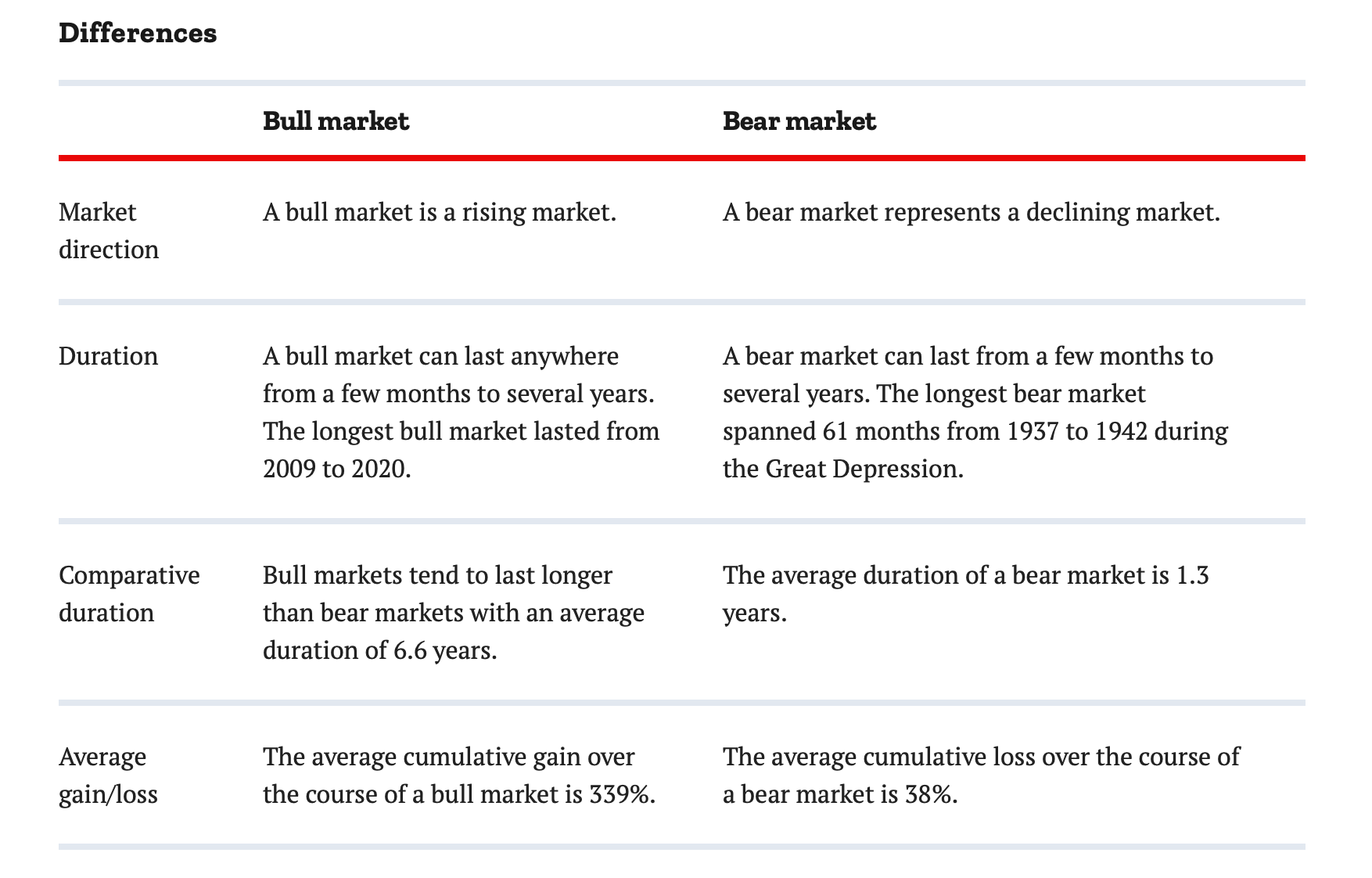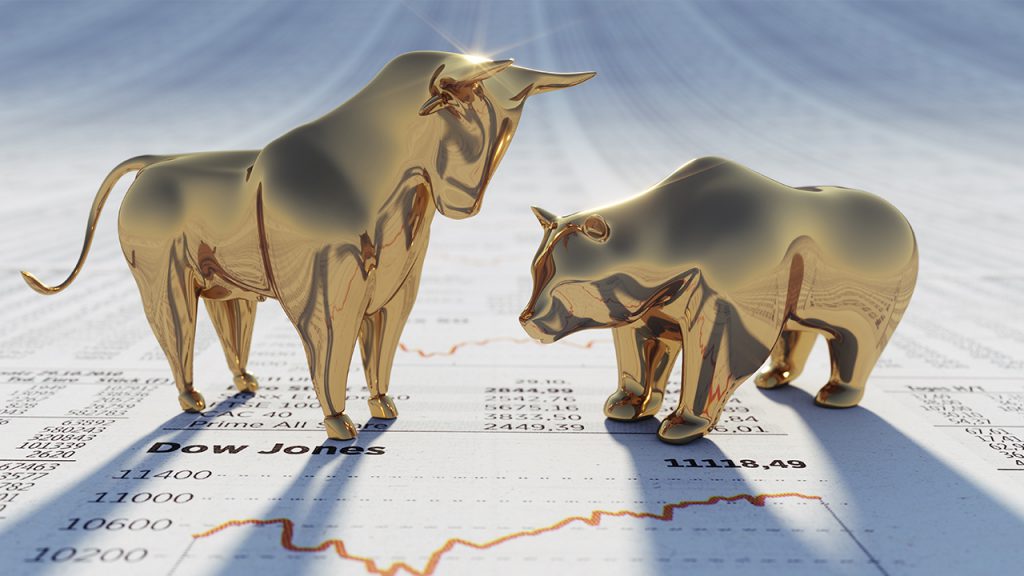Bear Market vs. Bull Market

What is a bull market?
Investor.gov defines a bull market as “a time when stock prices are rising and market sentiment is optimistic. Generally, a bull market occurs when there is a rise of 20% or more in a broad market index over at least a two-month period.”
During a bull market, investors are generally enthusiastic about a strong economy and solid job growth. The longest bull market in history started in 2009 and extended through 2020. The start of this bull market was on the heels of a severe bear market tied to the financial crisis of 2007–08.
What is a bear market?
Investor.gov defines a bear market as “a time when stock prices are declining and market sentiment is pessimistic. Generally, a bear market occurs when a broad market index falls by 20% or more over at least a two-month period.”
A bear market is often marked by low investor confidence and a declining economy. The bear market surrounding the financial crisis of 2008 saw the S&P 500 decline by nearly 40% during the 2008 calendar year. The bear market occurred during what some referred to as the worst economic downturn since the Great Depression of the 1930s.
Key similarities and differences
Both a bull and a bear market represent a significant percentage movement in the market. Both are often tied to the direction of the economy and can be symptomatic of changes in various economic factors.
Similarities
- Both types of markets can be fueled by economic or political factors. In the case of a bear market, this might include fears of a recession or economic downturn. In the case of a bull market, solid economic and job growth might serve to stimulate a rise in the stock market.
- In either type of market, not all stocks move in the general direction of the market. Some stocks by nature move in a contrary direction to the general market. While the terms bull or bear market might be sweeping generalizations, individual stocks may be affected by factors not directly related to the overall movement of the markets.

How to invest in a bull vs. bear market
The reality is that most investors cannot predict when a bull or bear market will start or for how long it will last. Beyond full-on bull or bear markets, there are also market rallies to the upside that don’t meet the definition of a bull market, as well as market downturns that don’t meet the criteria to be labeled as a bear market.
Long-term investors generally should not change their investing style to accommodate either a bull or bear market. Rather, many experts recommend that they have an asset allocation that reflects their risk tolerance, their investing time horizon, and their long-term goals. Investors should periodically rebalance their portfolios. Working with a financial advisor to help you develop an investing strategy that fits your situation can help you to stay on track. WiserAdvisor is one place to find one who’s a good fit for you.
Diversification is a good strategy for most investors in all market environments. While bull and bear markets do have their own definitions, this is not to say that each bull or bear market is the same as the last one.
For example, the bear market that began in 2000 and extended into 2002 was largely fueled by the “bursting of the tech bubble.” It was then exacerbated by the tragic events of 9/11 and the aftermath. During this bear market, there were sectors that still did well for investors.
During the bear market fueled by the financial crisis of 2008 that included a major crash in the housing market, virtually every market sector was impacted. There were few if any safe havens for investors in the bear market that ended in early 2009.
Investing considerations in a bull market
Ideally, as investors see what appears to be the start of a bull market, they might buy stocks, stock mutual funds, and ETFs. As the bull market surges higher, they might consider selling some of their equity holdings. At the very least, they should continue with their normal rebalancing regimen.
A potential downfall for investors in a bull market is a reluctance to sell and take profits. Especially in a prolonged bull market, investors can forget the pain they experienced in the last bear market and feel like the bull market will never end. This is perhaps the biggest risk that an investor might face in a bull market.
Investors also need to realize that few if any investors can call the top of a bull market with any consistency. It is unlikely that you will ever sell holdings at the absolute top of the market, except by “dumb luck.” It’s important to have a predetermined sell discipline during a bull market versus holding on for just the right time to sell. The latter will more often than not result in you not only missing the peak of the market, but perhaps also selling at a loss. Setting limits via the app of an online broker such as TradeStation and J.P. Morgan* can help give you the information and discipline to sell when you’ve reached your target for a given holding in your portfolio.

Investing considerations in a bear market
As investors sense a bear market coming on, this might be a good time to buy stocks, mutual funds and ETFs at a low price. Depending upon the depth and breadth of the bear market, there can certainly be some bargains to be had.
While buying stocks whose price has fallen can make sense in a bear market, it’s unlikely that most investors will be able to call the absolute bottom in either the bear market as a whole or for any individual investment they are considering. Investors who purchase stocks or other holdings during a bear market must be prepared for the prices of these holdings to drop further before bottoming out. Using a robo advisor like M1 Finance will enable you to keep your investing costs low.
Investors should have a cushion of lower-risk investments to tide them through the rough patches of a bear market so they are not forced to sell holdings at a loss to provide cash flow during the bear market.
For investors who are nearing or entering retirement at the start of a bear market, a severe downturn can put a real crimp in their financial plans for retirement. If their portfolio is too heavily tilted towards riskier investments, encountering a bear market at this point in their lives can mean a reduced retirement lifestyle or lead to them having to work longer than planned in order to rebuild their retirement assets.
Investor Psychology
Because the market’s behavior is impacted and determined by how individuals perceive and react to its behavior, investor psychology and sentiment affect whether the market will rise or fall. Stock market performance and investor psychology are mutually dependent. In a bull market, investors willingly participate in the hope of obtaining a profit.
During a bear market, market sentiment is negative; investors begin to move their money out of equities and into fixed-income securities as they wait for a positive move in the stock market. In sum, the decline in stock market prices shakes investor confidence. This causes investors to keep their money out of the market, which, in turn, causes a general price decline as outflow increases.

